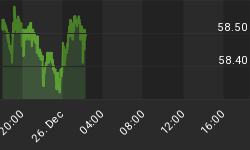Just as the term "Goldilocks" becomes the latest buzz in economic headlines, the real data are gradually leaning to the softer side, allowing Goldilocks to finally feel the cold as more seasonal temperatures start to erode the aberration from abnormally warm weather. But it is not all about weather. The FOMC has finally reduced its preoccupation with inflation at the same week when manufacturing indices dropped back into recessionary levels. The stronger than expected advanced Q4 GDP tells an incomplete tale on a quarter that is already behind us. Softer than expected payrolls and rising unemployment rate both merit closer scrutiny.
The softer than expected reading in the February payrolls triggered short-lived declines in the US dollar, until the currency reversed its losses on rumors that the European Central Bank is considering halting its tightening cycle after an expected move in March to 3.75%. Eurozone interest rates are currently priced for two 25-bp rate hikes to 4.00% by year-end. The reports suggest the ECB could pause for months after a March rate hike as it faces uncertainty with Germany's VAT hike. EURUSD plummeted by a full cent (from 1.3064 to 1.2965), USDJPY lifts from 120.65 to 1213.30 before stabilizing at 121.
US payrolls were revised higher by a total of 933K last year, while the November and December figures were revised up by a net increase of 81K. The unemployment rate rose to a 4-month high of 4.6%, while average hourly earnings edged up 0.2% m/m and 4.0% y/y. Setting the annual revisions aside, manufacturing shed a net of 16K jobs following a drop of 18K in December, posting the 7 th straight monthly net loss. Service jobs saw the net increase in payrolls cut by half to 104K, the lowest reading since October 2005. Retailers created a net increase of 4K jobs after a drop of 14K, while professional and business services, education/health and government jobs all saw slower job creation.
The chart below shows the 3-month average for payrolls in manufacturing, construction and services, with the former two showing some signs of stability while services weakening. It is unclear to what extent were the two monthly increases in construction jobs attributed to warm temperatures. But the chart below, shows that the deterioration in US manufacturing continues could raise reasons for concern in the event of prolonged increase in oil prices.

As the unemployment rate hits a 4-month high at 4.6%, and sector payrolls weaken further, the onset of incoming rate cuts can be closer than is perceived-- particularly given the Fed's past inclination to cut interest rates at times of rising jobless rate. Although market liquidity remains ample-despite the increase in real interest rates and the unemployment rate, global liquidity can be reduced by events such as unwinding of carry trades and a gradual run up in rate hike expectations in Japan.
A 4.7% unemployment rate later this quarter should be a strong signal of an incoming rate cut, as early as May. After all, the Fed finally succumbed to the latest evidence of softer inflation figures and reduced its preoccupation with price pressures. Meanwhile, with both the Chicago PMI and ISM manufacturing in contraction territory at 4-year lows, the goldilocks economy may be starting to feel cold as markets get over the aberration of unusually warm temperatures.















